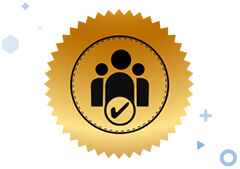جون ۱۱, ۲۰۲۳ شائع ہوئی 542 نے دیکھا
1. Conduct thorough assessments of patients to identify their physical limitations, functional abilities, and specific needs. This involves reviewing medical history, performing physical examinations, and using specialized assessment tools and techniques.
2. Assessment and Evaluation: Conduct thorough assessments of patients to identify their physical limitations, functional abilities, and specific needs. This involves reviewing medical history, performing physical examinations, and using specialized assessment tools and techniques.
3. Diagnosis and Treatment Planning: Interpreting assessment findings to diagnose the nature and extent of the patient's condition. Developing individualized treatment plans that address the patient's goals, using evidence-based practice, and considering the patient's overall health and lifestyle.
4. Hands-on Therapy: Administering a range of physical therapy techniques and interventions such as manual therapy, mobilizations, soft tissue techniques, electrotherapy, and therapeutic exercises. These techniques aim to reduce pain, increase mobility, improve strength and flexibility, and enhance overall physical function.
5. Patient Education: Educating patients and their families about their condition, treatment options, and self-management strategies. Providing guidance on exercises, posture correction, ergonomic principles, and lifestyle modifications to prevent further injury or disability.
6. Monitoring and Progress Evaluation: Regularly assessing and documenting the patient's progress throughout the treatment process. Modifying treatment plans as necessary to ensure optimal outcomes. Tracking and reporting on treatment goals, functional improvements, and any challenges encountered during therapy.
7. Collaborative Approach: Collaborating with other healthcare professionals, such as doctors, nurses, occupational therapists, and orthopedic specialists, to ensure comprehensive and coordinated care for patients. Consulting with colleagues to seek advice or refer patients when necessary.
8. Record Keeping: Maintaining accurate and up-to-date patient records, including assessment findings, treatment plans, progress notes, and other relevant documentation. Adhering to legal and ethical standards regarding patient confidentiality and data protection.
9. Research and Professional Development: Keeping up-to-date with the latest advancements and evidence-based practices in the field of physiotherapy. Engaging in continuous professional development activities, attending workshops, conferences, or courses, and contributing to research projects or publications when possible.
10. Professional Ethics: Adhering to professional standards, codes of conduct, and ethical guidelines established by regulatory bodies. Demonstrating empathy, respect, and sensitivity towards patients of diverse backgrounds, ensuring their comfort and well-being throughout the therapeutic process.
11. Health Promotion and Prevention: Promoting health and wellness in the community by providing educational sessions, workshops, or seminars on injury prevention, exercise, and healthy living. Collaborating with organizations or employers to develop workplace ergonomics programs or fitness initiatives.
12. Interpreting assessment findings to diagnose the nature and extent of the patient's condition. Developing individualized treatment plans that address the patient's goals, using evidence-based practice and considering the patient's overall health and lifestyle.
13. Administering a range of physical therapy techniques and interventions such as manual therapy, mobilizations, soft tissue techniques, electrotherapy, and therapeutic exercises. These techniques aim to reduce pain, increase mobility, improve strength and flexibility, and enhance overall physical function.
14. Educating patients and their families about their condition, treatment options, and self-management strategies. Providing guidance on exercises, posture correction, ergonomic principles, and lifestyle modifications to prevent further injury or disability.
15. Regularly assessing and documenting the patient's progress throughout the treatment process. Modifying treatment plans as necessary to ensure optimal outcomes. Tracking and reporting on treatment goals, functional improvements, and any challenges encountered during therapy.
16. Collaborating with other healthcare professionals, such as doctors, nurses, occupational therapists, and orthopedic specialists, to ensure comprehensive and coordinated care for patients. Consulting with colleagues to seek advice or refer patients when necessary.
17. Maintaining accurate and up-to-date patient records, including assessment findings, treatment plans, progress notes, and other relevant documentation. Adhering to legal and ethical standards regarding patient confidentiality and data protection.
18. Adhering to professional standards, codes of conduct, and ethical guidelines established by regulatory bodies. Demonstrating empathy, respect, and sensitivity towards patients of diverse backgrounds, ensuring their comfort and well-being throughout the therapeutic process.
مہارتیں
نوکری کی تفصیلات
Work Environment
AIMS Sugar Hospital
....
















